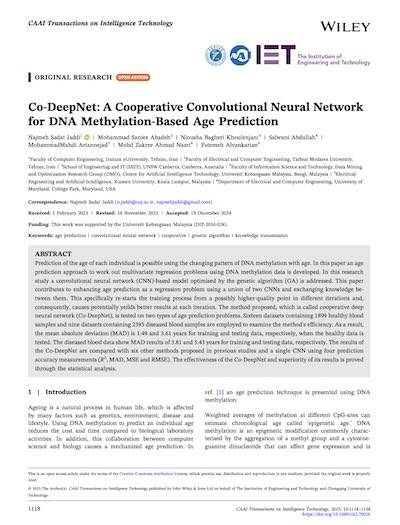Today's article comes from the CAAI Transactions on Intelligence Technology journal. The authors are Jaddi et al., from Iranian eUniversity, in Tehran. In this paper they're arguing that two smaller neural networks might be able to explore a solution-space more efficiently than a single larger one.
DOI: 10.1049/cit2.70026


You must be an active Journal Club member to access this content. If you're already a member, click the blue button to login. If you're not a member yet, click the sign-up button to get started.
Login to My Account
Sign Up